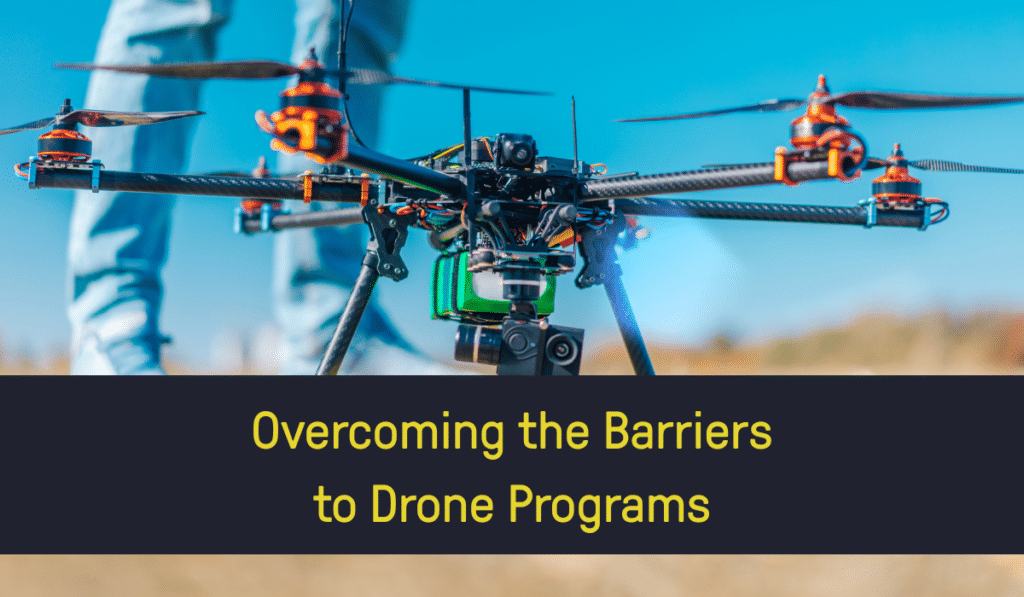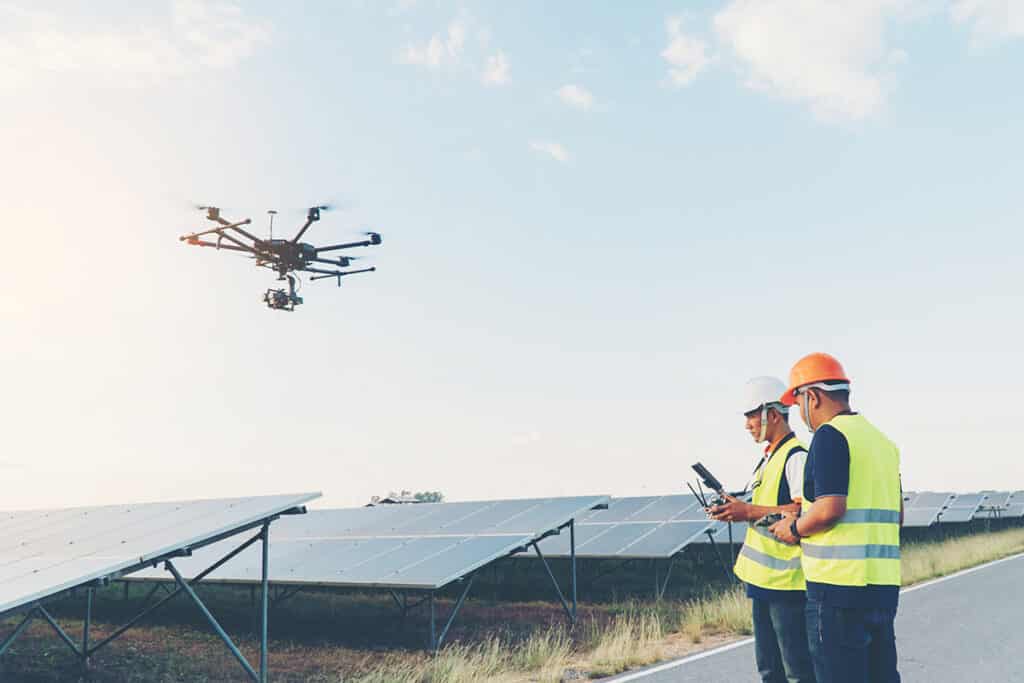Integrating Drones & Crewed Aircraft, Safely
With the right steps, integrating drones with your crewed aircraft can be done safely & effectively.
Since the first crewed flight by the Wright Bros in 1903, humans have enjoyed the thrills of aviation. Over the course of more than a century, advances in aircraft design have made crewed flight something many of us experience routinely.
As the role of crewed aircraft grew, businesses began taking advantage of them for a wide range of applications. Everything from faster travel to aerial inspections is now a matter of routine.
So, what happens when adding drones to your existing crewed aviation operations?
I’ve spoken with plenty of pilots worried about drones operating in their airspace over the years. With the inherent risks of flight, it’s no wonder safety is their primary concern.
Occasional reports of rogue drone operators are largely to blame for this perception, as responsible drone pilots always obey regulations.
With hundreds of thousands of drones registered in the United Kingdom and the United States, UAV numbers far exceed those of crewed aviation platforms.
If you need to benefit from aviation assets, both drones and crewed, you need a path toward successful integration. Thankfully, with proper planning, you can enjoy the benefits of both drones and crewed assets without causing safety issues.
We’ll focus on two situations: rogue drones and drones under your operational control.
Rogue drones are those operated by individuals who do not follow the rules for safe operation in a given area. These operators are difficult to control and can shut down operations.
For the purpose of our discussion, we’ll assume all other operators remain under your control.
Dealing with Rogue Drones
The threat of rogue drones is a real one.
Near misses have already occurred, such as the drone that almost hit the aircraft carrying UK diplomat Sir Tim Barrow, in 2021.
Though counter-UAS technology has improved greatly in the last few years, many countries limit who can use such technology. Often, it is reserved for the military, law enforcement, and other government entities.
For most organizations, the best method for dealing with these drones is to avoid them, to the best of your ability. While this is easier said than done, the only other option is to report rogue drones.
And unfortunately, although reporting remains important, it usually only helps in the aftermath of an incident. Having additional safety observers can help to at least direct your aerial assets away from them.
The bottom line is that the best method for rogue drones integrating with crewed assets is to avoid them.
Integrating Drones of Your Own
When operated responsibly by your organization or those working around you, you can easily accomplish integrating drones into operations with crewed aircraft.
Let’s discuss how you can accomplish this.
First and foremost, whether you operate drones or hire someone else, you must insist on proper training for everyone is. Depending on where you’re located, you may also need to require pilots to be licensed in accordance with local regulations.
Most locations have established rules and regulations for operating in the national airspace.
Trained pilots remain aware of these and follow them without exception. Responsible pilots will also ensure their equipment is safe and working in accordance with the manufacturer’s guidelines.
Proper training and safe equipment are the foundation for integrating drones and crewed aircraft.
Develop Guidelines for Integrating Drones with Your Crewed Assets
Next, you should establish guidelines within your organization for UAV operation around crewed aircraft.
Any platform operated by or carrying people should always have the right of way. Your guidelines should reinforce this point and develop standard operating procedures for what type of drones are allowed to be used, the requirements for who can fly them, and what to do in the case of an emergency.
Standard guidelines should include when drones can be flown (weather conditions, times of day, flight times, etc.) and limits on flights, such as never flying above 400 feet AGL.
With clear guidelines developed, you must then communicate the guidelines to all parties involved.
Crewed aircraft operators should also be aware of these policies so that it is common knowledge throughout the entire organization.
This common knowledge will allow everyone to develop methods for working together, and when challenges arise, have a better chance at reaching a productive and safe solution.
Once policies are in place and widely disseminated, look for technological solutions that can improve the safety and efficiency of drones working in and around crewed aircraft.
One example is geofencing. This technology can limit the operations of a drone to within a set area and within set parameters. Think of it like placing a box around your drone in the sky, or creating an invisible ‘fence’. Drones can only work within the fence, and crewed aircraft can avoid it to ensure a collision is nearly impossible.
Bringing It Together
Crewed aircraft and drones are both beneficial for numerous applications.
And, though legitimate safety concerns exist when integrating drones with your crewed assets, you can easily mitigate them.
Through proper training, reliable equipment, established and widely understood policies and procedures, and technology, you can easily reap the rewards of UAVs and crewed aircraft working together.
Develop your guidelines, ensure everyone is aware, and you’ll be well on your way to success.
—
So, are you ready to take advantage of drones for your organization? If so, how do you get started? Do you hire out or bring your drone program in-house?
At Consortiq, we help you find a better way with drones, from consultation and program implementation to actually doing the work for you.
Ready to learn more? Just complete the form below to schedule a risk-free consultation!

David Daly - Contributing Author
David Daly, is an award-winning photographer/writer and licensed (FAA) Commercial sUAS pilot. A graduate of the United States Naval Academy, David is a former Marine Corps officer with a BS in Oceanography and has earned his MBA from the University of Redlands. David has worked for Fortune 100 companies and has a background in aerospace, construction, military/defense, real estate, and technology.
Ready to Utilize Drones For Your Organization?
Contact Us Today to Get Started!




